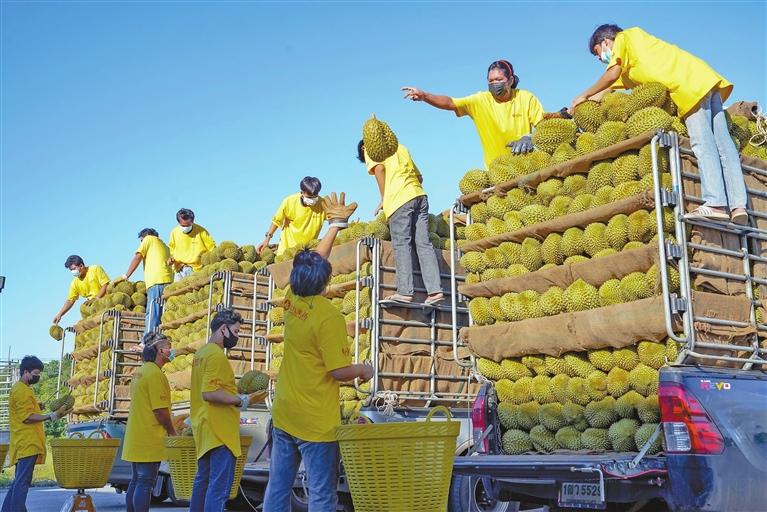
KANG LILI, an ardent durian enthusiast, can now indulge in delectable Thai durians without breaking the bank. This comes as the price of durians has witnessed a substantial drop, much to Kang’s delight. Previously priced at nearly 100 yuan (US$13.87) per kg in April, the cost has now lowered to 40-plus yuan per kg in June. Known as the “king of fruits” in Southeast Asia, the durian is attracting an increasing number of Chinese consumers due to its luscious texture and distinctive flavor. However, its high price has deterred many from experiencing its delights. The price cut can be attributed to abundant durian harvests in Southeast Asian countries and the facilitation of international trade through the Belt and Road cooperation, which has fostered the establishment of efficient logistics channels between China and the countries along the Belt and Road route. These international logistics networks have not only enhanced trade but also reduced transportation time between durian-producing regions in Southeast Asia and China’s inland areas. In 2017, western Chinese provinces and ASEAN member states jointly launched the New International Land-Sea Trade Corridor, with Chongqing serving as the pivotal transportation hub. This corridor stands as one of the significant initiatives developed under the Belt and Road Initiative. Prior to the launch of the trade corridor, durians from Southeast Asian countries had to be transported by sea to eastern cities in China before reaching the western regions, resulting in long transportation times and high costs. On June 11, a cross-border train carrying approximately 500 tons of fresh Thai durians, the first of its kind, arrived in Chongqing via the new corridor. Deng Haoji, the COO of Hongjiu Fruit, the durian importer, stated that compared to previous land-sea routes, the entire journey took only four days instead of eight to 10 days. This has not only reduced costs but also minimized losses during transportation, benefiting more customers. The New International Land-Sea Trade Corridor now encompasses 61 cities in 18 provincial-level regions of China and has expanded to include 393 ports in 119 countries and regions. From January to April, the corridor facilitated the transportation of 51,000 twenty-foot equivalent unit (TEU) containers of goods in Chongqing, representing a 37% year-on-year increase. The total value of goods transported exceeded 7.88 billion yuan, marking a 24% year-on-year growth. Thai durian orchard owner Pornlert Chanto expressed enthusiasm for the corridor, noting that logistics have significantly improved. With the rapid growth in China’s market demand, Chanto, a major supplier of Hongjiu Fruit, has seen his revenue grow from approximately 3 million yuan in 2018 to 3.5 million yuan in 2022. Besides durians, other specialty products from Southeast Asia, including Thai dragon fruit, Indonesian coffee, beer from Laos, and Vietnamese basa fish, are also making rapid inroads into the Chinese market through the trade corridor.(Xinhua) | 
